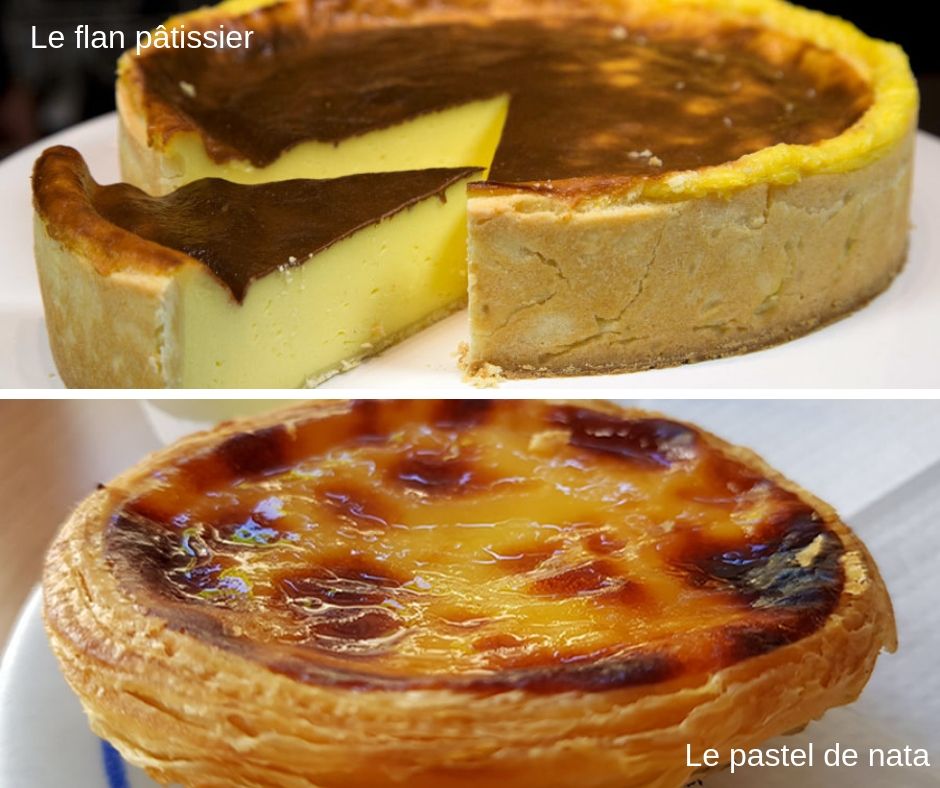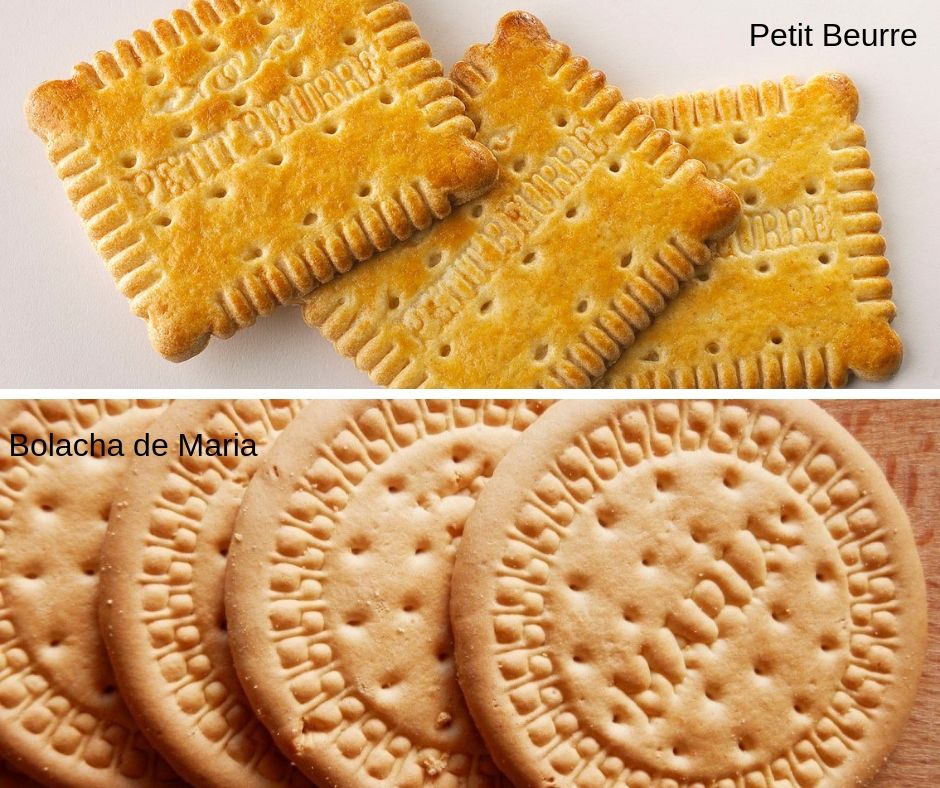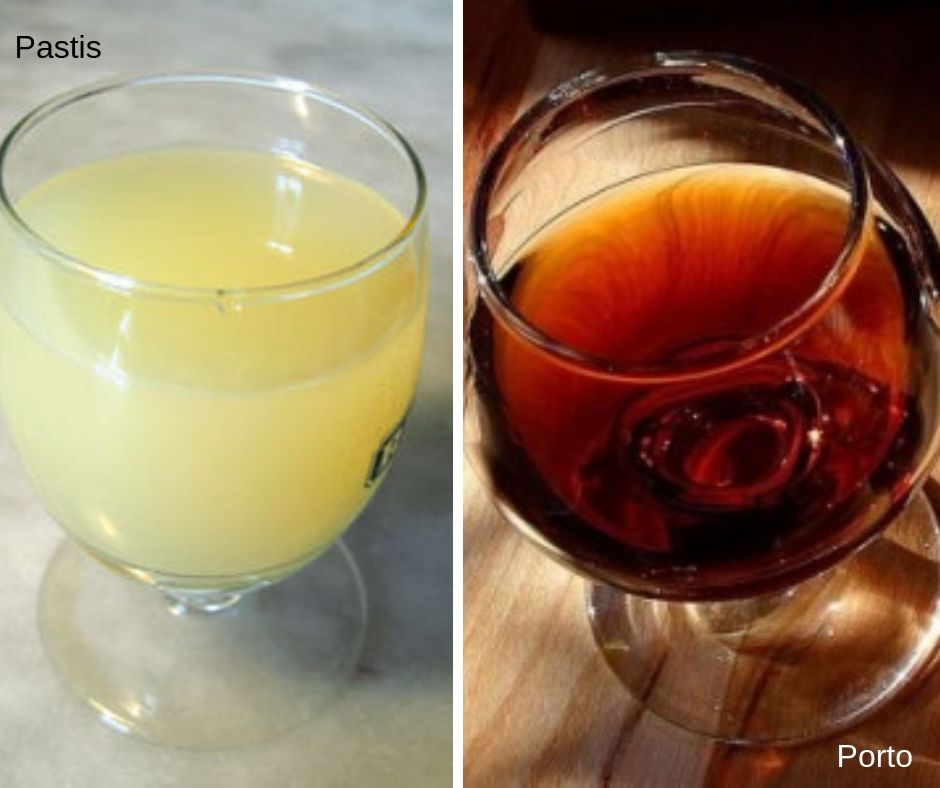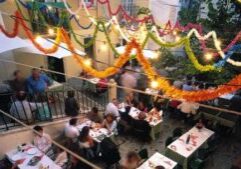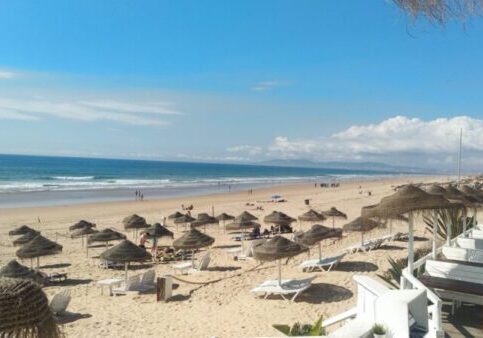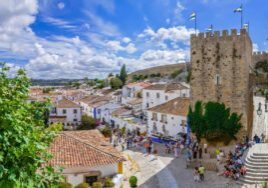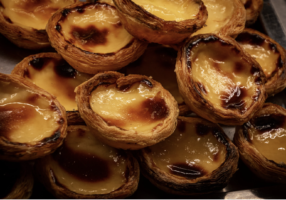Portuguese and French cuisine: 15 equivalents
![]()
If there’s one thing I don’t understand, it’s the French who move to Portugal in search of French products and services. Many people want to find in Portugal: a French supermarket, a French school, a French restaurant, a French bakery, a French beautician, a French hairdresser, French television, a French sports coach, French friends … From you to me, if you want that, you have to live in France! If you come to live in Portugal, it’s to live “Portuguese-style”. It’s not the country that has to adapt to you, but you who have to adapt to the country. So, yes, it’s not easy at first, and you’ll sometimes feel lost and disoriented. But, little by little, you’ll get the hang of it! So in this article I’ve decided to show you that adaptation is possible and even easy for some things. In fact, when it comes to food, Portuguese cuisine offers a number of similarities to your usual French pleasures. So, instead of trying to eat French food, try out these Portuguese equivalents!

1. Flan pâtissier vs Pastel de nata
Hummmm … you know that good slice of flan pâtissier you used to have for your afternoon snack in France? Well, that’s all over in Portugal! So what are you going to treat your stomach to at snack time now that you’re here in Portugal?
In the end, the answer is quite simple: a counterpart to the French flan pâtissier is a celebrity in Portuguese cuisine. I’m talking, of course, about “Pastel de nata”! With its flan-like appearance, this little snack will delight your taste buds and quickly become one of your favorite Portuguese sweets. To try it is to adopt it. It’s hard to resist, believe me!
Flan pâtissier (top) vs Pastel de nata (bottom).
2. Baguette vs Portuguese bread
Now we’re going to strike a chord: the famous baguette! The one the French love so much! How can you live without it? Even worse: can a Frenchman live without a baguette?
Do you know something? I’ve got some good news. The Portuguese love bread too. But we’re in Portugal, so you’ll have to adopt new eating habits for bread too, because I’d rather tell you that you won’t find baguettes in bakeries here. Well… you will if you go to a French bakery in Portugal, but that’s not the point, is it?
In Portugal, there are lots of different kinds of bread, from the most traditional to the most original(made with red fruit, carob, beet, etc.) . The types of bread on offer vary quite a lot from one region to another. Most come in individual loaves. My favorites are the Broa(a corn bread) and the Pão da avó(which means “grandmother’s bread”). What’s your favorite Portuguese bread? What’s your favorite Portuguese bread?
Baguette (top) vs. Portuguese bread (bottom).
3. Crepe vs Tripa
Ah yes! Les crêpes! The famous crêpes that we French love so much! Whether you’re from Brittany or not, frankly, who doesn’t love crêpes? But then, how can you live without crêpes in Portugal?
Well, I’ve got the solution! No, no, I’m not going to talk to you about going to a French creperie in Portugal, but rather about eating locally with the “Portuguese crepe”: the “tripa”. Don’t worry, it’s not tripe, but a kind of thick, undercooked pancake. It’s filled like a crêpe with sugar, Nutella, jam or cinnamon… but the traditional filling is eggs and sugar. It may sound a little disgusting, but many desserts in Portugal are made with eggs and sugar, and they’re not bad. You won’t find tripa everywhere in Portugal, as it’s a specialty of Aveiro, in central Portugal, so it’s mainly found in this region. I urge you to try this typically Portuguese snack.
Crepe (left) vs Tripa (right).
4. Parisien vs Bifana & Prego
Who among you has never eaten a little ham and butter sandwich on the go between lunch and dinner? You know the one called the “Parisien” and found in every bakery in France.
In Portugal, there’s no such thing as a “Parisien”, just two essential sandwiches: the bifana and the prego. The difference between the two is the meat used.
- The bifana: pork steak in bread. So popular in Portugal that for many years, fast-food giant Mc Donald’s offered the Mc Bifana in Portuguese Mc Donald’s.
- Prego: beef steak in bread.
Le Parisien (top), le Bifana (middle), le Prego (bottom).
5. Roast chicken vs. Frango churrasco
Gone are the days of the Sunday roast chicken you bought already roasted at the market or made yourself in your oven.
From now on, it’s “Frango no churrasco”(barbecued chicken). In Portugal, barbecuing isn’t just for summer, it’s a religion all year round! For me, grilled chicken in Portugal is the best chicken in the world(I should point out that I wasn’t bribed to write this 🙂 ). I’m so crazy about it that I eat at least one a week. Rest assured, I’m not the only one?
Roast chicken (top) vs. Frango Churrasco (bottom).
6. Pot au feu vs Cozido à portuguesa
For those who love French family dishes, you’ll be happy here in Portugal, as Portuguese cuisine offers many generous, family-style dishes. Of course, you won’t find your usual pot au feu, but you can try its alter ego: the “Cozido à Portuguesa”.
Cozido à Portuguesa” is one of Portugal’s main traditional dishes. It features beef, veal, pork, Portuguese sausages: farinheira, chorizo, morcela and vegetables: cabbage, carrots, turnips, potatoes. A word of advice: you’d better be hungry, it’s hearty!
For those of you with chef’s skills, here’s a link to the recipe for “Cozido à Portuguesa”. Get cooking!(and don’t hesitate to share a photo of the result on the “Amoureux du Portugal” facebook group. I can’t wait to see!)
Pot au feu (top) vs Cozido à portuguesa (bottom).
7. Croque Monsieur vs Francesinha
We’ve all ordered a croque monsieur from a French brasserie at least once in our lives. It’s a staple! But in Portugal, it’s out of the question!
In Portugal, the closest thing to it is the famous francesinha(meaning ” little French girl”), a VERY gourmet version of the croque monsieur. The francesinha is made with bread, ham, linguiça(Portuguese sausage), beef, cheese and a thick layer of sauce. Very light, isn’t it? If you’d like to find out more about the history of this Portuguese dish and why it’s called ” la petite française”, I invite you to read our article on Portuguese gastronomy.
Croque Monsieur (top) vs Francesinha (bottom).
8. Camembert vs Queijo da Serra
Let’s get down to business! Your Camembert! The one that some people like runny, others dry. The one that, along with the baguette, is a French symbol. Living without it seems almost impossible!
You’re now in Portugal, and it’s time to say “Au revoir cher Camembert”. In Portugal, the king of cheeses is Queijo da Serra, a sheep’s milk cheese from the Serra da Estrela. Like its French counterpart, it is adored by the Portuguese, and can be either runny or dry. If you choose “amanteigado” (translation: “like butter”), it will be runny, and if you choose “curado”, the paste will be harder.
Camembert (top) vs Queija da Serra (bottom).
9. Paella vs Arroz de Marisco
Anne-Sophie, paella isn’t a French dish”, you might say, but let’s be honest, in France we love paella and we’ve all eaten it with friends (or is it just me?!?) .
In Portuguese cuisine, there’s no paella, but you’ll find a delicious equivalent: “arroz de marisco”(which means ” rice with shellfish”). This dish features rice, mussels, shrimp, prawns, fish, coriander… The main difference with paella is that arroz de marisco is much moister than paella, and does not include chicken or chorizo.
Paella (top) vs Arroz de Marisco (bottom).
10. Beignet vs Bola de Berlim
In France, we’ve all bought a nice little sandy doughnut from a street vendor shouting on the beach.
In Portugal, adopt new habits! On Portuguese beaches, you’ll find the same vendors as in France shouting “bolaaaassss de Berlimmmm”(Berlin balls). You’re probably wondering: “Why such a name for a pastry that’s so deeply rooted in Portuguese cuisine?
The bola de Berlim is a recipe brought over by Judeo-German families who sought refuge in Portugal during the Second World War. Initially, the bola de Berlim was a kind of doughnut filled with red fruit jam. Portugal adapted it to make a Berlim bola filled with egg-based cream and sugar(the same as the one I mentioned earlier for topping tripas).
Beignet (left) vs Bola de Berlim (right).
11. Fish en papillote & Grilled fish
For fish, it’s the same fate as for the chicken I mentioned earlier. Gone is the Friday oven-baked fish en papillote you used to eat in France.
In Portugal, fresh fish is grilled on the barbecue, and it’s pure delight!
Baked sea bream in papillote (top) vs. barbecued sea bream (bottom).
12. Rice pudding vs Arroz doce
Let’s talk dessert, with the pot of rice pudding you used to love to have at the end of a meal at home. In Portugal, what sweet note will delight your taste buds? Oh, good! You’re in luck, because one of the most popular desserts in Portugal is identical to the French rice pudding. It’s called “arroz doce”(which translates as “sweet rice”).
But you’re in Portugal! And in Portuguese cuisine, two ingredients are often used in desserts. Do you know what they are? Eggs and cinnamon! And “arroz doce” is often generously sprinkled with this spice. Personally, I love it, so I have no problem with it, but I know it’s a pretty strong spice and some people don’t like it too much.
Rice pudding (left) vs. Arroz doce (right).
13. Petit Beurre vs Bolacha de Maria
In France, “petit beurre” is probably THE cookie that has been eaten from generation to generation. The cookie we all had in our school snack boxes. But, once you’ve settled in Portugal, what will you give your little blondes to nibble on?
What a question! Its Portuguese counterpart, of course: the “Bolacha de Maria”(which translates as “Maria’s cookie”). The “Bolacha de Maria” is the cookie that every Portuguese has in their cupboard, and you’ll find it in every supermarket and mini-market around! But you know what? In reality, this cookie isn’t really Portuguese. Yes, it is! I assure you! If you’d like to know more about the history of this cookie and why it’s for a certain “Maria”, I invite you to take a look at our article on Portuguese gastronomy.
Petit beurre (top) vs Bolacha de Maria (bottom).
14. Cassoulet vs Feijoada à portuguesa
As with the pot au feu I mentioned earlier, you won’t find cassoulet in Portugal either. But don’t panic, this famous French dish has its equivalent in Portuguese cuisine
So, if you find yourself craving cassoulet while living in Portugal(yes, I’ve often met people craving cassoulet 🙂 ), then go for a good “Feijoada”. This dish is very popular in Brazil and Portugal. It’s made with pork and black beans(feijão in Portuguese, which explains the name of the dish) . Here’s the recipe if you want to make this dish at home.
Cassoulet (left) vs Feijoada (right).
15. Pastis vs Porto
The little yellow one is out! No Pastis for aperitifs in Portugal!
In the land of Pessoa, if you’re going to have an aperitif, it’s obviously going to be a good glass of Porto. Whether it’s white, red, young or old, there are many different types of Port to choose from, and you’ll have plenty of time to try them all. Another lesser-known aperitif served in Portugal is Moscatel , which I recently told you about on the “Vivre.au.Portugal” Instagram. Moscatel is a sweet white wine found mainly in the Setubal region.
Pastis (left) vs Porto (right).
In conclusion
Even if there are similarities, Portuguese cuisine is obviously different from that in France. Living in Portugal means having to deal with different changes. In fact, to find out which ones you’ll have to deal with, I invite you to read my article: “Portuguese life: 30 little things of everyday life in Portugal”.
Of course, some of the “French” products and dishes I mentioned in the article can be found in Portugal, but I don’t think you go to another country to eat French food.
And if you’re a bit nostalgic for France, take a plane ticket, eat a good Camembert and a baguette there, and then come back to Portugal to eat Portuguese 🙂
Are you ready to change your habits and adapt to Portuguese life and cuisine?
If you liked this article, please click on the “Like” button below. And don’t forget to follow us on our social networks: our Facebook group “Amoureux du Portugal”, our Facebook page “Vivre au Portugal” and our Instagram “Vivre au Portugal”.
Receive the latest blog posts and our selection of properties every month.
* required fieldFirst name * *Last name Telephone E-mail address * *Current city of residence Area of interest: *
- Buying a property in Portugal
- Renting a property in Portugal
- Nothing special in mind
Date of arrival in Portugal How can we help you? * * Please contact me:*
- Quickly please
- Later please
Region of interest *
- Almada
- Aroeira
- Seixal
- Setubal
- Other
You can view our Privacy Policy and Termsand Conditions here
Articles Populaires
dernières annonces
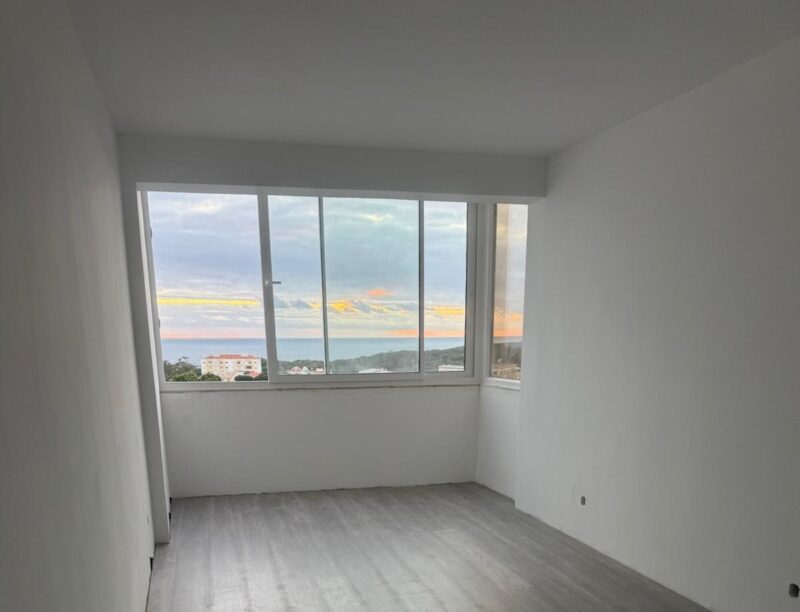
2 bedroom apartment with sea view, 10km from Lisbon and 2km from the beaches
Rua da Bica, 103Discover this magnificent 2 bedroom apartment with views of Arriba Fóssil and the sea, 2km…

Duplex apartment with sea view 15 minutes from Lisbon
rua Santa Teresa 7Bedroom + duplex apartment with sea view and 15 minutes from Lisbon.

Single-storey house with swimming pool
Just a few meters from the magnificent bay of São Martinho do Porto, lies this…
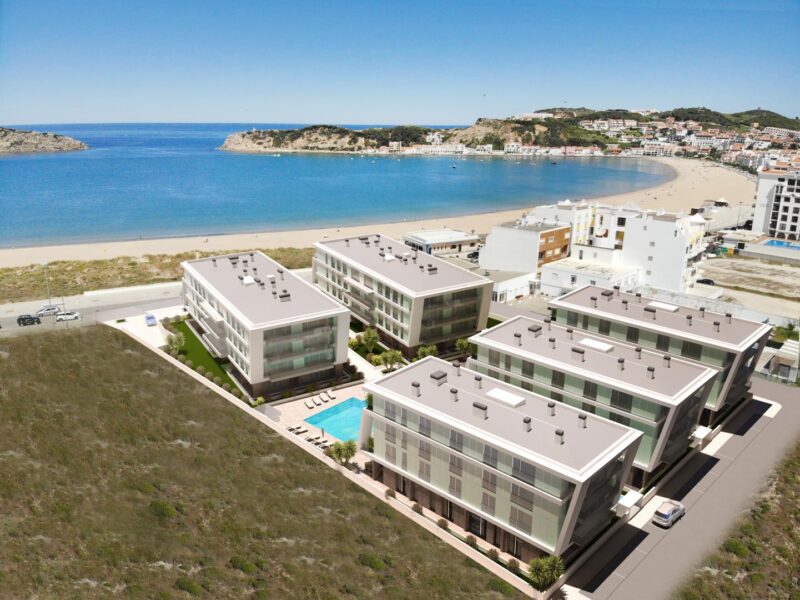
Condominium apartments facing the sea
São Martinho do PortoBeautiful apartments in São Martinho do Porto “Janela da Baía”! Located in the heart of…

Villa already finished and ready to move in: 4-suite bungalow on 750m2 plot in a quiet area of Azeitão
Rua de ParisHouse already finished and ready to move into! Close to shops and services, quick access…

Magnificent house with basement, indoor and outdoor pool in Verdizela/Aroeira
Verdizela/AroeiraNew turnkey project: magnificent single-storey villa, 498m2 in surface area, high-end finishes on a 1875m2…

Luxury apartment on the edge of a nature reserve
Your modern, spacious apartment between the beach and Lisbon’s capital. – Beach 5min – Golf…
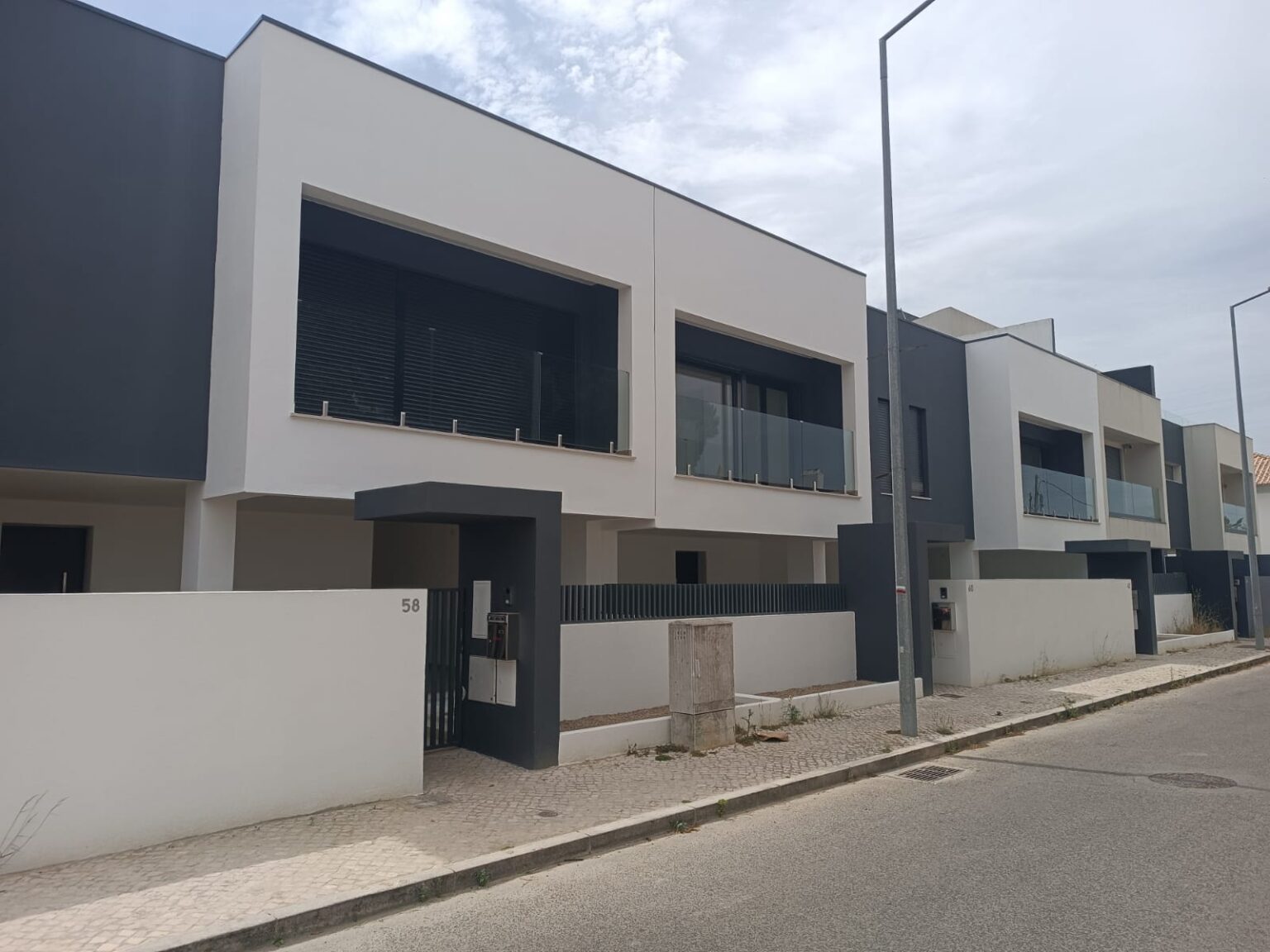
House T3 1 10 min from Lisbon and 5 min from the beaches
PêraREADY TO MOVE IN! New T3 1 ready-to-live-in house in a quiet, rural neighborhood with…

4 bedroom villa with pool and jacuzzi in Aroeira
rua são miguelModern, minimalist architect-designed house with exceptional details in a quiet location in Aroeira 2-storey house…
Inscrivez-vous à notre newsletter
Recevez chaque mois les derniers articles de notre blog "la vie au Portugal" et notre sélection de biens immobiliers à vendre.

